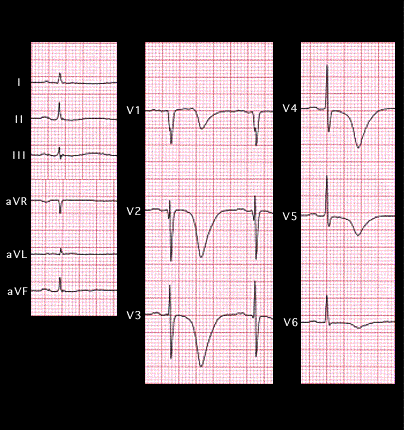
The ECG shown here is from a patient with an enzyme positive ischemic event but without the development of Q waves. The deeply inverted and widened T wave and prolonged QT interval, sometimes referred to as “giant T waves” represents a rather extreme example of the type of T wave change associated with a non-Q-wave, or non-transmural infarction. In this patient there was a high grade lesion in the proximal portion of the left anterior descending coronary artery, similar to that shown for the previous patient.
